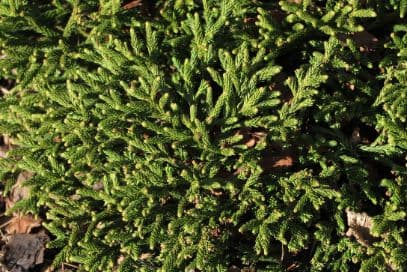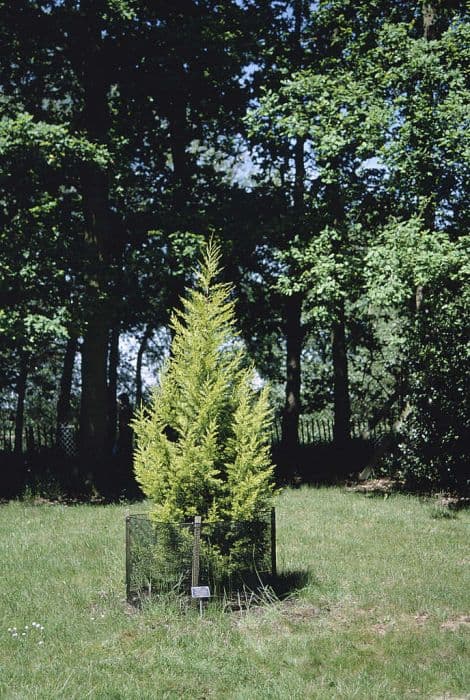Incense Cedar Calocedrus decurrens 'Berrima Gold'
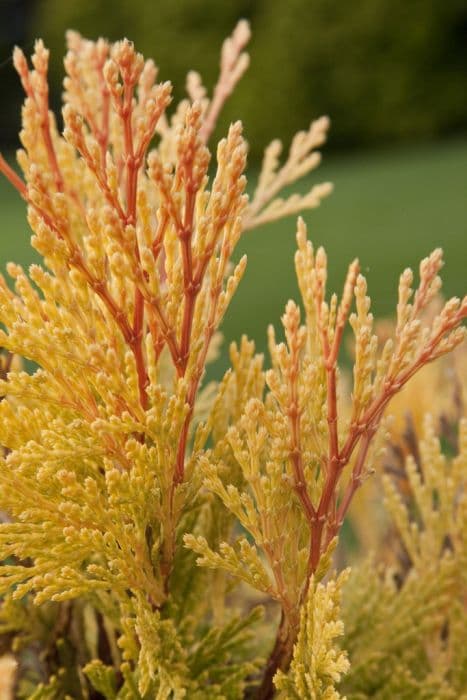

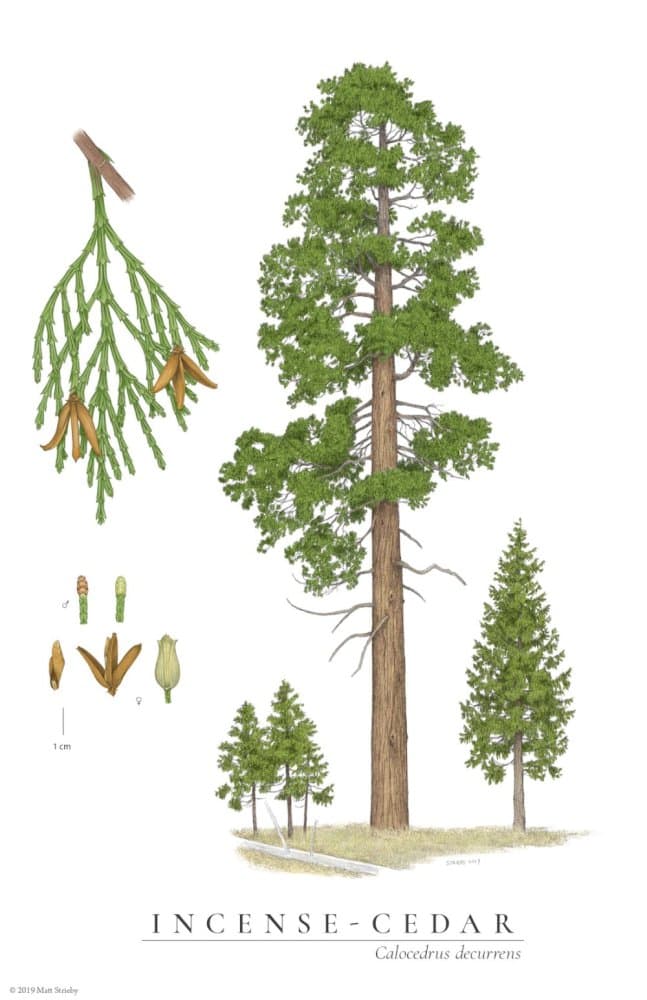
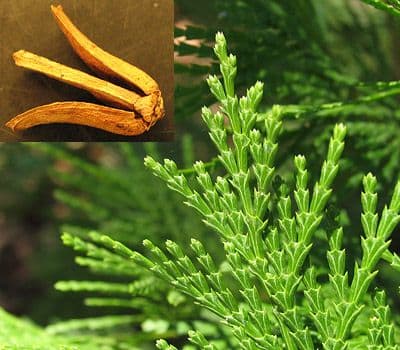
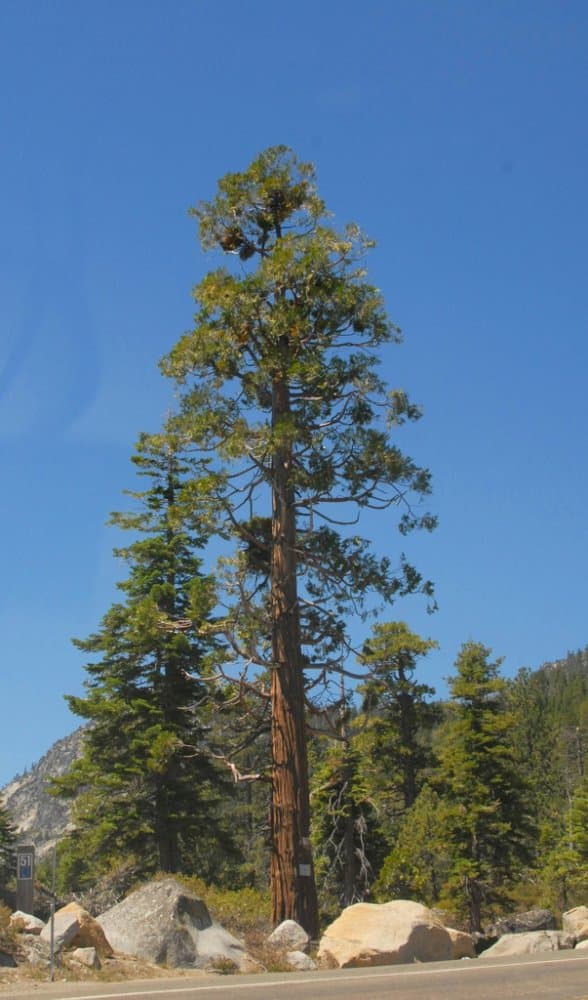
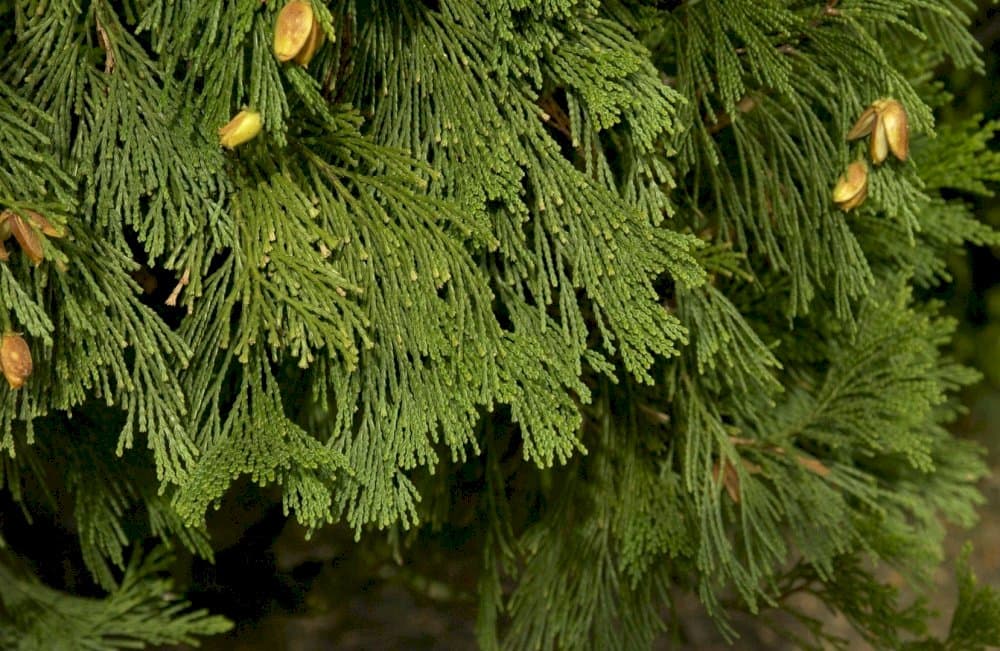
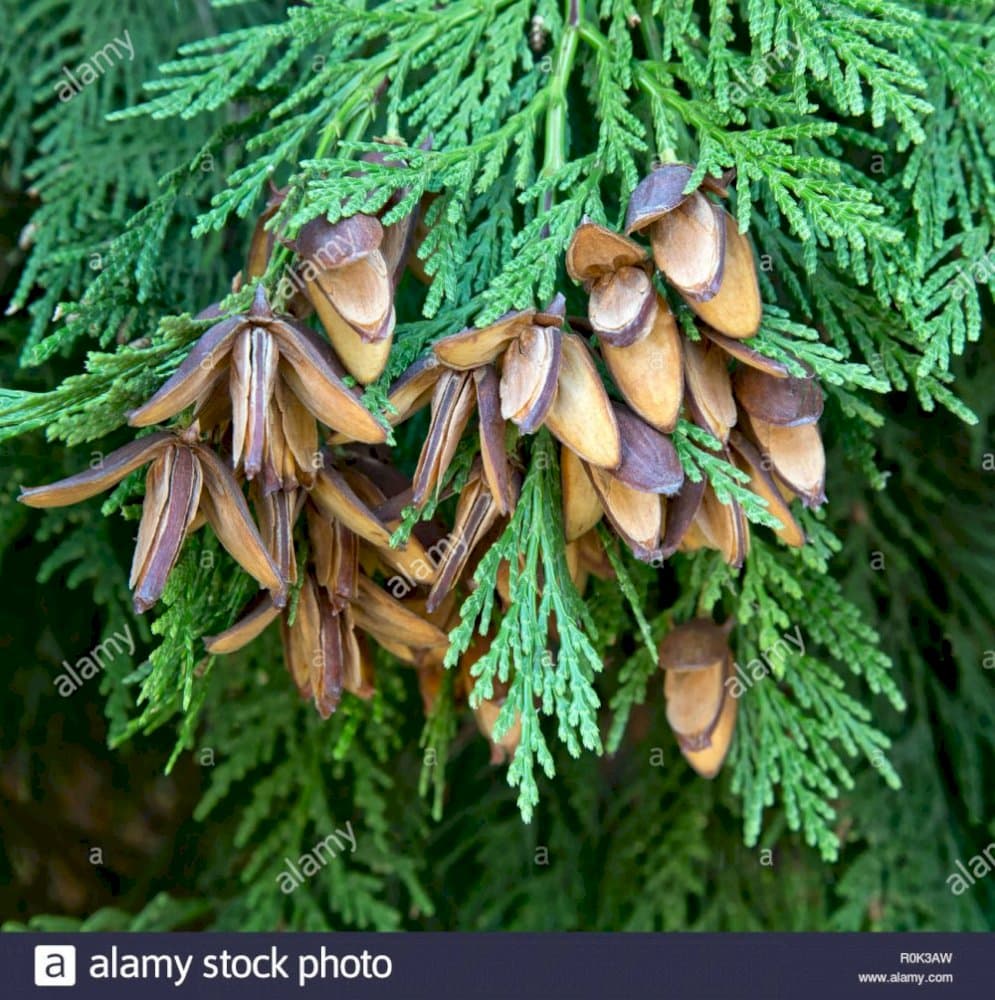
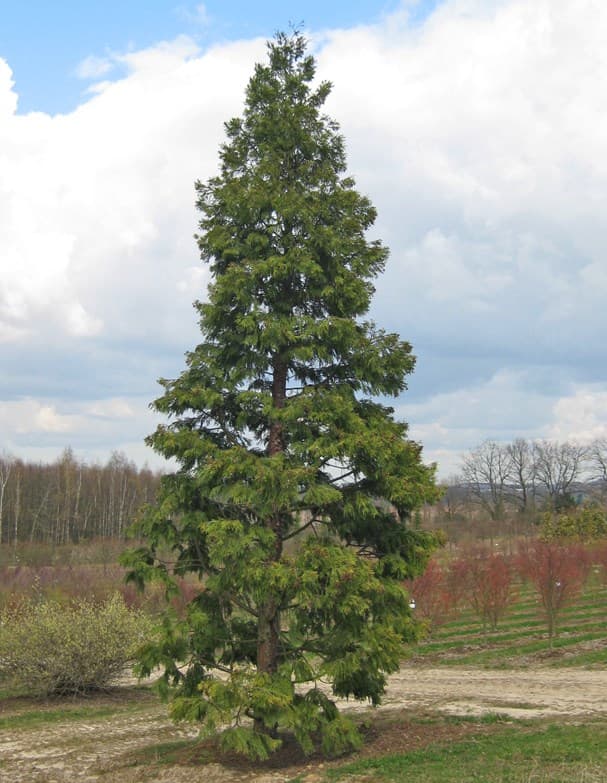
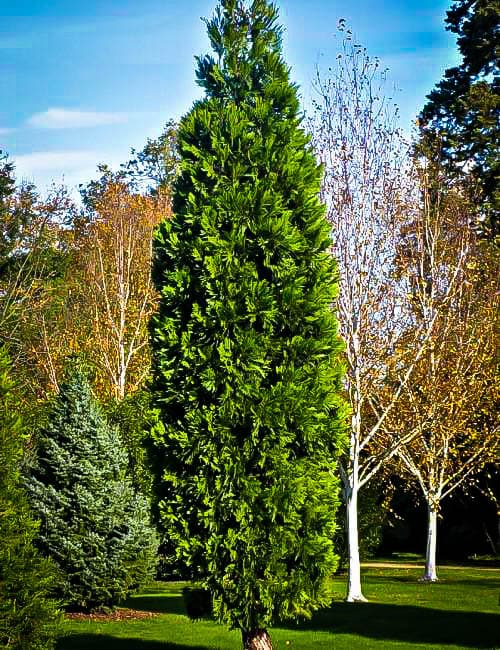
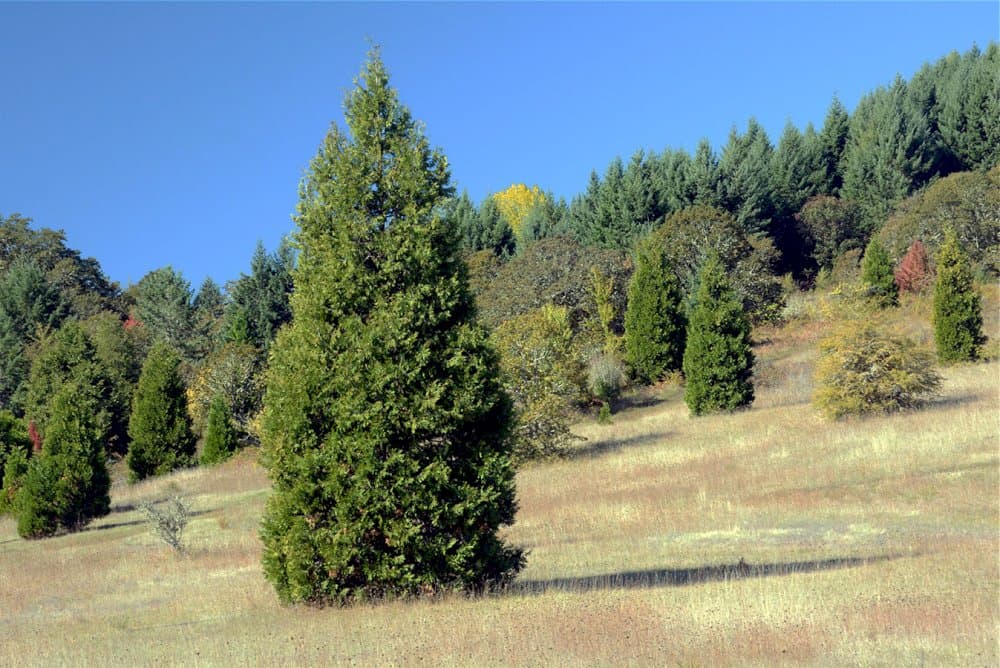
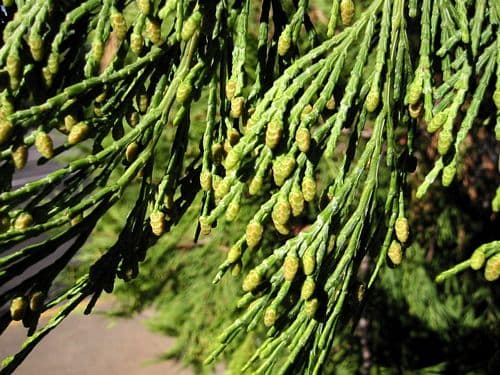
ABOUT
The Calocedrus decurrens 'Berrima Gold', commonly known as the Incense Cedar 'Berrima Gold', is a visually striking plant that features bright, golden-yellow foliage. The leaves are scale-like and arranged in flattened sprays, giving the plant a dense, textured appearance. The golden hues are most intense during the new growth in the spring and summer months, gradually turning to a more muted hue during the colder seasons, providing year-round interest. The foliage is soft to the touch and emanates a pleasant, resinous fragrance that is often associated with cedar trees, contributing to its common name. The plant sports a naturally conical shape that becomes narrower at the top, resembling a pyramid. Its bark is relatively smooth with a reddish-brown color that adds to the plant's ornamental value. The Incense Cedar 'Berrima Gold' is known for its brilliant color and stately shape, making it a popular choice for gardeners looking to add a vibrant splash of color to their landscape.
About this plant
 Names
NamesFamily
Cupressaceae
Synonyms
Berrima Gold Incense Cedar, Golden Incense Cedar, Yellow Cedar, Gold Cedar
Common names
Libocedrus decurrens, Heyderia decurrens, Calocedrus decurrens.
 Toxicity
ToxicityTo humans
Incense Cedar, the common name for Calocedrus decurrens 'Berrima Gold', does not have a well-documented profile of toxicity for humans. However, as with many plants, it is always prudent to avoid ingesting parts of ornamental plants due to potential unknown toxicities or individual allergic reactions. If someone were to ingest parts of the Incense Cedar and symptoms were to occur, it would be wise to seek medical advice.
To pets
Incense Cedar, recognized more widely by its common name, is not commonly listed as a toxic plant to pets. Nevertheless, it’s generally advised to prevent pets from ingesting plants as they could potentially cause gastrointestinal upset or an allergic reaction in some animals. If a pet does consume a part of the Incense Cedar and displays signs of distress or unusual behavior, contacting a veterinarian is recommended.
 Characteristics
CharacteristicsLife cycle
Perennials
Foliage type
Evergreen
Color of leaves
Gold
Height
30 feet (9 meters)
Spread
10 feet (3 meters)
Plant type
Tree
Hardiness zones
5
Native area
North America
Benefits
 General Benefits
General Benefits- Ornamental Value: Adds aesthetic appeal to gardens with its striking golden-yellow foliage.
- Year-Round Interest: Evergreen nature ensures that it provides color and structure throughout all seasons.
- Wildlife Habitat: Offers shelter and nesting sites for various bird species and other wildlife.
- Drought Tolerance: Once established, it is quite tolerant of dry conditions, requiring minimal supplemental watering.
- Low Maintenance: Requires little pruning or other care, making it suitable for low-maintenance landscapes.
- Windbreak: Can be used in a hedge or screen, providing protection from strong winds and noise reduction.
- Suitable for Urban Environments: Tolerates urban pollution and can be planted in city settings.
- Adaptable to Soil Types: Can grow in a wide range of soil conditions, though it prefers well-drained soils.
 Medical Properties
Medical PropertiesThis plant is not used for medical purposes.
 Air-purifying Qualities
Air-purifying QualitiesThis plant is not specifically known for air purifying qualities.
 Other Uses
Other Uses- Insect Repellent: The wood and leaves of the Incense Cedar contain natural compounds that repel moths and other insects, making it a practical choice for creating natural insect repellent sachets.
- Fragrance Production: The aromatic properties of Incense Cedar can be used in the production of perfumes and essential oils, providing a woody and warm fragrance note.
- Wood Carving: Incense Cedar has a fine, straight grain that makes it suitable for detailed woodworking and carving projects, including small sculptures and decorative items.
- Wreath Making: The foliage of the Incense Cedar, with its bright golden color, is often used in winter wreaths and garlands for festive decoration.
- Culinary Smoking: Wood chips from the Incense Cedar can be used for smoking meats to impart a unique flavor, although it is not as commonly used as other woods like hickory or oak.
- Craft Materials: Small branches and twigs can be harvested and used as natural craft materials for making wreaths, dream catchers, or as part of floral arrangements.
- Privacy Screening: Due to its dense and conical growth habit, Incense Cedar can be used in landscape design to create privacy screens or windbreaks in residential gardens.
- Educational Tool: Encouraging interest in botany and horticulture, the plant can be used as an educational tool in schools and workshops to teach about plant growth and care.
- Photography: The unique golden foliage of the Incense Cedar provides a striking subject for nature and landscape photography.
- Spiritual Symbolism: In various cultures, cedar trees are associated with spiritual protection and purification, making the Incense Cedar a meaningful plant in certain spiritual and religious practices.
Interesting Facts
 Feng Shui
Feng ShuiThe Calocedrus decurrens, commonly known as the Incense Cedar, is not typically used in Feng Shui practice.
 Zodiac Sign Compitability
Zodiac Sign CompitabilityThe Incense Cedar is not used in astrology practice.
 Plant Symbolism
Plant Symbolism- Endurance: Calocedrus decurrens, commonly known as Incense Cedar, has a natural capacity to withstand challenging conditions and thus symbolizes endurance.
- Immortality: The evergreen nature of the Incense Cedar, with its leaves lasting through all seasons, often represents eternal life or immortality.
- Protection: Incense Cedar has been traditionally used by indigenous people to ward off bad spirits, signifying protection and purification.
- Spirituality: Due to its aromatic wood and use in spiritual practices, Incense Cedar is often associated with spiritual elevation and enlightenment.
 Water
WaterThe Incense Cedar requires watering every 7 to 10 days during dry periods, with more frequent watering in extremely hot or windy conditions. It should be given a deep watering, which can be achieved by slowly adding 10-15 gallons around the drip line of the tree. Newly planted trees will need more consistent moisture to establish roots, so for the first couple of years, ensure the soil remains consistently moist but not waterlogged. Reduce watering frequency in the fall and winter when the plant's water needs decrease.
 Light
LightIncense Cedar thrives in full sun to partial shade, meaning it should receive at least 4 hours of direct sunlight each day. The best spot for the plant is an area that is unobstructed by taller buildings or trees to ensure it gets abundant sunlight. However, the tree can tolerate partial shade, especially in hotter climates where some relief from the intense afternoon sun is beneficial.
 Temperature
TemperatureIncense Cedar can survive in temperatures down to about 0 degrees Fahrenheit and is tolerant of high temperatures, making it a hardy choice for a variety of climates. The ideal temperature range for this tree is between 30 and 90 degrees Fahrenheit, which allows for robust growth and vitality. Extreme temperatures outside of this range can stress the plant, especially if they are prolonged.
 Pruning
PruningIncense Cedar should be pruned to maintain its shape and remove any damaged or diseased limbs; this promotes healthy growth and prevents potential spread of disease. The best time to prune is during the dormant season, typically in late winter before spring growth starts. Pruning may be done annually, focusing on thinning out crowded areas to improve air circulation and removing any branches that are crossing or rubbing together.
 Cleaning
CleaningAs needed
 Soil
SoilIncense Cedar 'Berrima Gold' thrives in well-draining soil with a neutral to slightly acidic pH of about 6.0 to 7.5. Use a mix of loamy soil, peat, and sharp sand or perlite for optimal root health and water drainage.
 Repotting
RepottingIncense Cedar 'Berrima Gold' is a slow-growing conifer and generally does not require frequent repotting. It should be repotted every 3 to 5 years or when it outgrows its container, using fresh soil mix to ensure continued health.
 Humidity & Misting
Humidity & MistingIncense Cedar 'Berrima Gold' is adaptable to various humidity levels but prefers average to low humidity common in outdoor environments, reflecting its native habitat conditions.
 Suitable locations
Suitable locationsIndoor
Place Incense Cedar 'Berrima Gold' in bright indirect light.
Outdoor
Plant in well-draining soil; full sun to partial shade.
Hardiness zone
5-8 USDA
 Life cycle
Life cycleCalocedrus decurrens 'Berrima Gold', commonly known as Incense Cedar, begins its life cycle as a seed, which, once germinated in a suitable environment, breaks through the soil surface as a seedling. As it grows, it enters the juvenile phase, characterized by rapid vegetative growth, and gradually develops its distinct golden-yellow to chartreuse foliage, especially pronounced in new growth. Over several years, the plant reaches maturity and begins its reproductive phase, developing small, inconspicuous male and female cones on the same tree; the male cones release pollen, which fertilizes the female cones. After pollination and fertilization, seeds develop within the female cones and, once mature, are dispersed by wind to begin a new cycle. As a long-lived tree, the Incense Cedar can continue this reproductive process annually for many decades. The mature phase is also marked by the tree's increased resistance to environmental stressors and pests, culminating in its role as an established member of the ecosystem until it reaches senescence and eventually dies, completing its life cycle.
 Propogation
PropogationPropogation time
Spring-Early Summer
The most popular method of propagation for the Incense Cedar 'Berrima Gold' is through semi-hardwood cuttings. This typically takes place in late summer. To propagate, one must select a healthy, disease-free branch and cut a segment that is about 4 to 6 inches (approximately 10 to 15 centimeters) long with several leaf nodes. The lower end of the cutting is then dipped in rooting hormone to encourage root development. The cutting is planted in a well-draining soil mix and kept under high humidity and indirect light until roots have developed, which can take several weeks. During this time, the soil must be kept consistently moist but not waterlogged. Once the cuttings have rooted firmly, they can be transplanted into individual pots or directly to their desired location in the garden.





